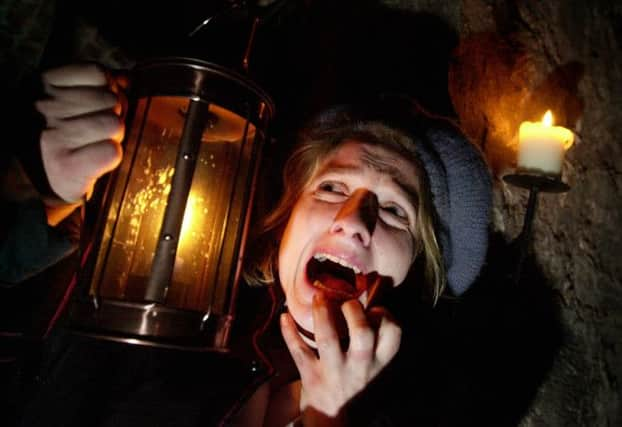Scary tourist attractions are big business


With its atmospheric landscape and abundance of haunted castles, peculiar superstitions and occasionally morbid history, it’s not surprising that Halloween first took root in Scotland. Halloween takes its name from All Hallows’ Eve, the night before the Christian festival of All Hallows or All Saints Day. But it’s possible to trace its beginnings back to the ancient Celtic festival of Samhain or Samhuinn, held on 1 November, which marked the culmination of summer and the harvest period with the onset of winter. Robert Burns’ 1785 poem Halloween details many of the national customs and legends surrounding the festival, many of them pagan in origin, which had persisted even with the advent of Christianity. One of the most enduring of these was the Celtic belief that it marked a time when the boundary between the living and the spirit worlds was at its most tenuous, and that the ghosts of dead, including supernatural beings such as witches and warlocks, would be able to walk the earth for this one night of the year.
However, it is not just at Halloween that visitors seek to explore the unexplained and the unimaginable in Scotland. “Dark tourism” is a phenomenon newly coined by academic expert and researcher John Lennon from Glasgow Caledonian University. Defined as “tourism involving travel to sites historically associated with death and tragedy”, it seems the main draw to dark locations is their historical value rather than their direct associations with loss and suffering.
Advertisement
Hide AdAdvertisement
Hide AdAs John explains: “Dark tourism is all about the fascination we have with the dark side of human nature, our ability to do evil and witness the evidence of horror which has a long been a proven draw in literature, film and all forms of media. Such sites have proven appeal to visitors and locals alike.
Of course Halloween is a proven visitor pull factor, but the task here is to extend the Halloween festivities from one night only and capitalise on the appeal that our authentic heritage sites, events and attractions can offer.”
It seems the appetite for dark tourism is strong, with visitors flocking to notably “spooky” attractions in Scotland to discover the “things that go bump in the night” from ghostly pipers to grey, green and white ladies; haunting monks to phantom trumpeters.
In 2013, domestic visitors who visited historic houses generated 563,000 trips, and spent £233 million, and those who visited historic castles generated a staggering 1,030,000 trips, and a spend of £423m.
The country’s capital seems to hold the biggest draw for those with a darker frame of mind. The city of Edinburgh has a hidden world of underground passages beneath its streets, the largest of which, under South Bridge, is said to be haunted by no less than nine different entities.
Edinburgh Castle is reported to be one of the most haunted places in Scotland, with one famous story around the Lone Piper. A few hundred years ago secret tunnels were discovered deep underground, running from the castle to other places in the city.
A piper boy was sent down to investigate, instructed to constantly play his pipes, so those above could chart his progress through the tunnels. When the playing suddenly stopped, they went and searched for the piper boy but he had vanished. His ghostly pipes can still be heard playing in the castle to this day.
Edinburgh was in fact named as Britain’s spookiest city in 2013 with a staggering 375 reported paranormal sightings in the past 25 years, so it is no wonder that the atmospheric Old Town is peppered with some of the best ghost tours in the country as well as some truly fear-invoking attractions such as The Real Mary King’s Close and the Edinburgh Dungeon, both of which welcome thousands of visitors every year.
Advertisement
Hide AdAdvertisement
Hide AdHowever, it’s not just the capital city that’s proving a draw for those in search of the inexplicable, the pull of eerie places is immeasurable, from Glamis Castle in Angus to Culloden Moor in Inverness-shire; Culzean Castle in Ayrshire to Abbotsford House in the Scottish Borders.
So, this Halloween we ask all Scots, visitors and even the ghosts themselves to get out into Scotland and discover the dark side of tourism – you never know what you might uncover.
From a brand new supernatural interactive map of Edinburgh’s spooky Royal Mile, to a bone-chilling exclusive video of Skaill House in Orkney, VisitScotland has a dedicated Halloween site, please visit www.visitscotland.com/halloween.
For more information on the Scottish Paranormal Festival, visit www.paranormalscotland.com
• Malcolm Roughead is chief executive of VisitScotland
SEE ALSO
CONNECT WITH THE SCOTSMAN
• Subscribe to our daily newsletter (requires registration) and get the latest news, sport and business headlines delivered to your inbox every morning